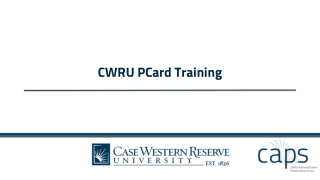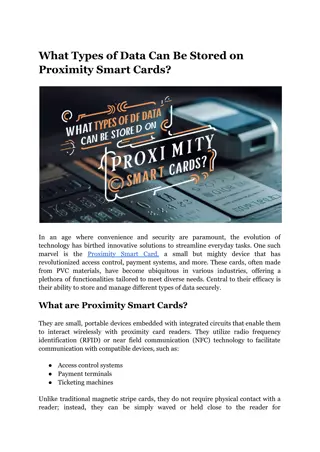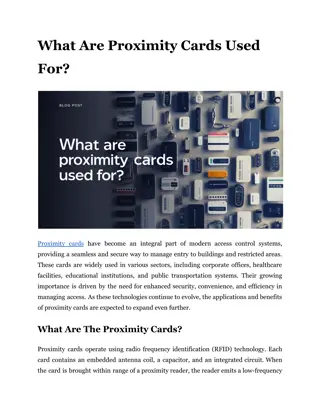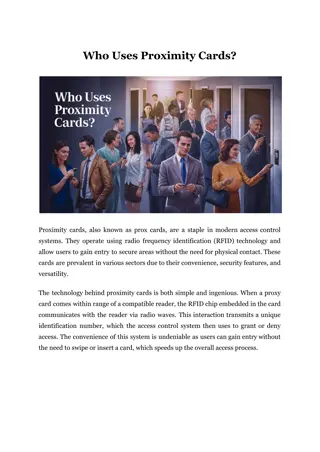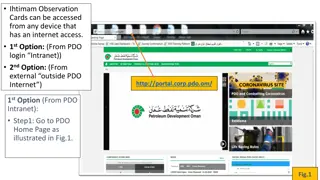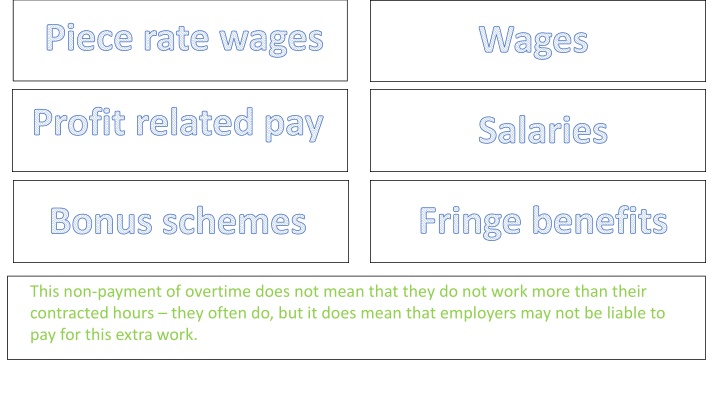
Different Payment Structures in Employment
Explore various payment methods in the workplace such as piece-rate wages, hourly wages, profit-related pay, and bonus schemes. Discover the implications for both employers and employees, including challenges and benefits of each approach.
Download Presentation

Please find below an Image/Link to download the presentation.
The content on the website is provided AS IS for your information and personal use only. It may not be sold, licensed, or shared on other websites without obtaining consent from the author. If you encounter any issues during the download, it is possible that the publisher has removed the file from their server.
You are allowed to download the files provided on this website for personal or commercial use, subject to the condition that they are used lawfully. All files are the property of their respective owners.
The content on the website is provided AS IS for your information and personal use only. It may not be sold, licensed, or shared on other websites without obtaining consent from the author.
E N D
Presentation Transcript
Piece rate wages Wages Profit related pay Salaries Fringe benefits Bonus schemes This non-payment of overtime does not mean that they do not work more than their contracted hours they often do, but it does mean that employers may not be liable to This non-payment of overtime does not mean that they do not work more than their contracted hours they often do, but it does mean that employers may not be liable to pay for this extra work. pay for this extra work.
Workers are paid for each item they produce or for each task completed. This does have advantages in that workers will work as fast as they can to maximise their income and payment is only made when work is completed. For the employer there must be a great deal of supervision and checking of quality as workers are motivated to achieve speed of output, not quality of output. From the employees point of view there is no guarantee of income and production may be halted. Paid hourly, for example 8 an hour, and the vast majority of unskilled workers in the UK are still paid wages. There is some security in being paid a wage. A minimum wage of 6.70 an hour (1 October 2015) cannot truthfully be regarded as an income likely to provide a decent standard of living. Some people argue that employers should pay a living wage of 7.85 an hour.
Make good financial sense for businesses because they are paid monthly in arrears which means that workers will have to wait up to a month to receive income for work performed. For example 25 000 or 30 000 per year. incomes are paid monthly, directly into a bank account. Links part of an employee s income to the profits of a company. Those who receive this will have a lower salary than they might otherwise expect but will benefit overall by receiving a share of company profits. The major problem in encouraging workers to take part in the schemes is that income is uncertain. Workers may believe that they have little influence on the profitability of the business, so they do not see why their income should fluctuate as profits fluctuate.
A company car is a necessity for anyone working in sales in the financial service business. Senior management in many companies would expect both an upmarket car and private health care. This can be paid to an individual or on a group or factory-wide basis. It is often paid for reaching targets of output and quality. This method of payment is an important part of Human Resource management. Often called the 13th month salary paid for loyalty to the business. In some countries (for example, Germany) virtually all companies will pay a Christmas bonus. Other forms of financial motivation include company cars, pension schemes, sickness benefits, subsidised meals and travel, and staff discounts.



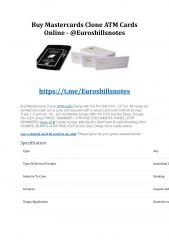
![Guardians of Collection Enhancing Your Trading Card Experience with the Explorer Sleeve Bundle [4-pack]](/thumb/3698/guardians-of-collection-enhancing-your-trading-card-experience-with-the-explorer-sleeve-bundle-4-pack.jpg)
